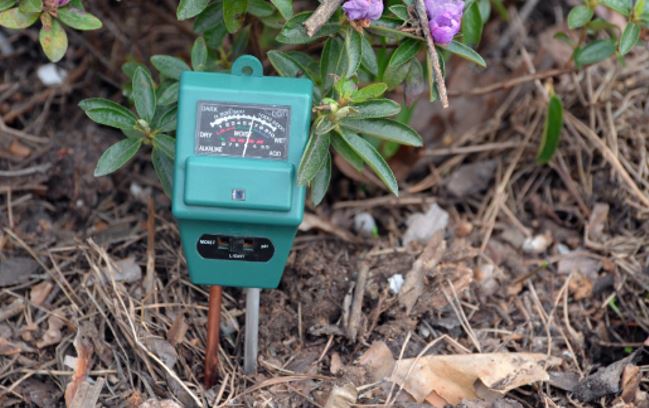Do you struggle with measuring the pH of your solutions or soil? Are you tired of guessing or relying on inaccurate readings? Look no further than the PH tool! This handy device is a must-have for anyone working with solutions or soil, as it provides accurate and reliable pH readings in a matter of seconds.
In this article, we’ll explore everything you need to know about the PH tool, including its benefits, features, and how to use it effectively. So let’s get started!
What is a PH Tool?
A PH tool, also known as a pH meter or pH tester, is a device used to measure the acidity or alkalinity of a solution or soil. It works by detecting the concentration of hydrogen ions (H+) in the sample being tested. The pH scale ranges from 0 to 14, with a pH of 7 considered neutral. A pH below 7 indicates acidity, while a pH above 7 indicates alkalinity.
Benefits of Using a PH Tool
Using a PH tool has several benefits for those working with solutions or soil:
1. Accuracy: A PH tool provides precise and accurate readings, unlike traditional methods such as litmus paper or color indicators.
2. Time-saving: With a PH tool, you can measure the pH of your sample in just seconds, saving you time and effort.
3. Cost-effective: While some PH tools can be expensive, they are cost-effective in the long run as they eliminate the need for frequent replacements of disposable testing supplies.
4. Versatility: PH tools can be used for various applications such as aquariums, hydroponics, brewing, farming, and more.
Features of a PH Tool
Before purchasing a PH tool, it’s essential to understand its features:
1. Electrode: The electrode is the part of the PH tool that comes into contact with the sample being tested. It’s crucial to choose a PH tool with a high-quality electrode as it is responsible for providing accurate readings.
2. Calibration: PH tools need to be calibrated regularly to ensure accurate readings. Look for a device with easy-to-follow calibration instructions and options.
3. Display: The display should be clear and easy to read, showing both the pH reading and temperature (if applicable).
4. Portability: If you need to take your PH tool on-the-go, look for one that is lightweight and compact.
How to Use a PH Tool
Using a PH tool is relatively straightforward, but it’s essential to follow these steps for accurate readings:
1. Prep your electrode: Before use, clean your electrode with distilled water and store it in storage solution (usually included with purchase).
2. Calibrate your PH tool: Follow the manufacturer’s instructions for calibration using standard buffers (pH 4 and 7 are common).
3. Test your sample: Immerse the electrode into the sample and wait for the reading to stabilize on the display.
4. Rinse your electrode: Rinse the electrode with distilled water after use and store it in storage solution until next use.
Common Mistakes When Using a PH Tool
While using a PH tool is relatively simple, there are some common mistakes you should avoid:
1. Not calibrating regularly: Failure to calibrate regularly can result in inaccurate readings.
2. Testing hot or cold samples: Extreme temperatures can affect the accuracy of your reading, so always allow your sample to reach room temperature before testing.
3. Storing improperly: Improper storage of your electrode can damage it, resulting in inaccurate readings or even complete failure.
4. Touching the electrode with bare hands: Oils from your skin can contaminate the electrode, affecting its accuracy.
Best Practices When Using a PH Tool
To ensure accurate and reliable readings, follow these best practices when using a PH tool:
1. Calibrate regularly: Calibration is essential for accurate readings.
2. Use fresh samples: Old or contaminated samples can affect your reading.
3. Rinse the electrode between tests: Rinsing with distilled water removes any residual sample and ensures accurate subsequent readings.
4. Store your electrode properly: Follow the manufacturer’s instructions for proper storage to extend the life of your electrode.
Conclusion
Using a PH tool is essential for anyone working with solutions or soil, providing accurate and reliable pH readings in a matter of seconds. When shopping for a PH tool, consider its features such as electrode quality, calibration options, display readability, and portability.
By following the correct steps and avoiding common mistakes, you can ensure accurate and consistent results from your PH tool. So don’t settle for guesswork or inaccurate readings – invest in a PH tool today!
References:
– “pH Meter.” Wikipedia, Wikimedia Foundation, 4 Oct. 2021, en.wikipedia.org/wiki/PH_meter.
– “How to Use a pH Meter.” WikiHow, 26 Feb. 2020, www.wikihow.com/Use-a-pH-Meter.
– “10 Best pH Meters Review.” Top Ten Reviews, Future US Inc., 5 July 2021,
www.toptenreviews.com/best-ph-meters-reviewed.
– “pH Meter Maintenance Tips.” Cole-Parmer, www.coleparmer.com/tech-article/ph-meter-maintenance-tips.




